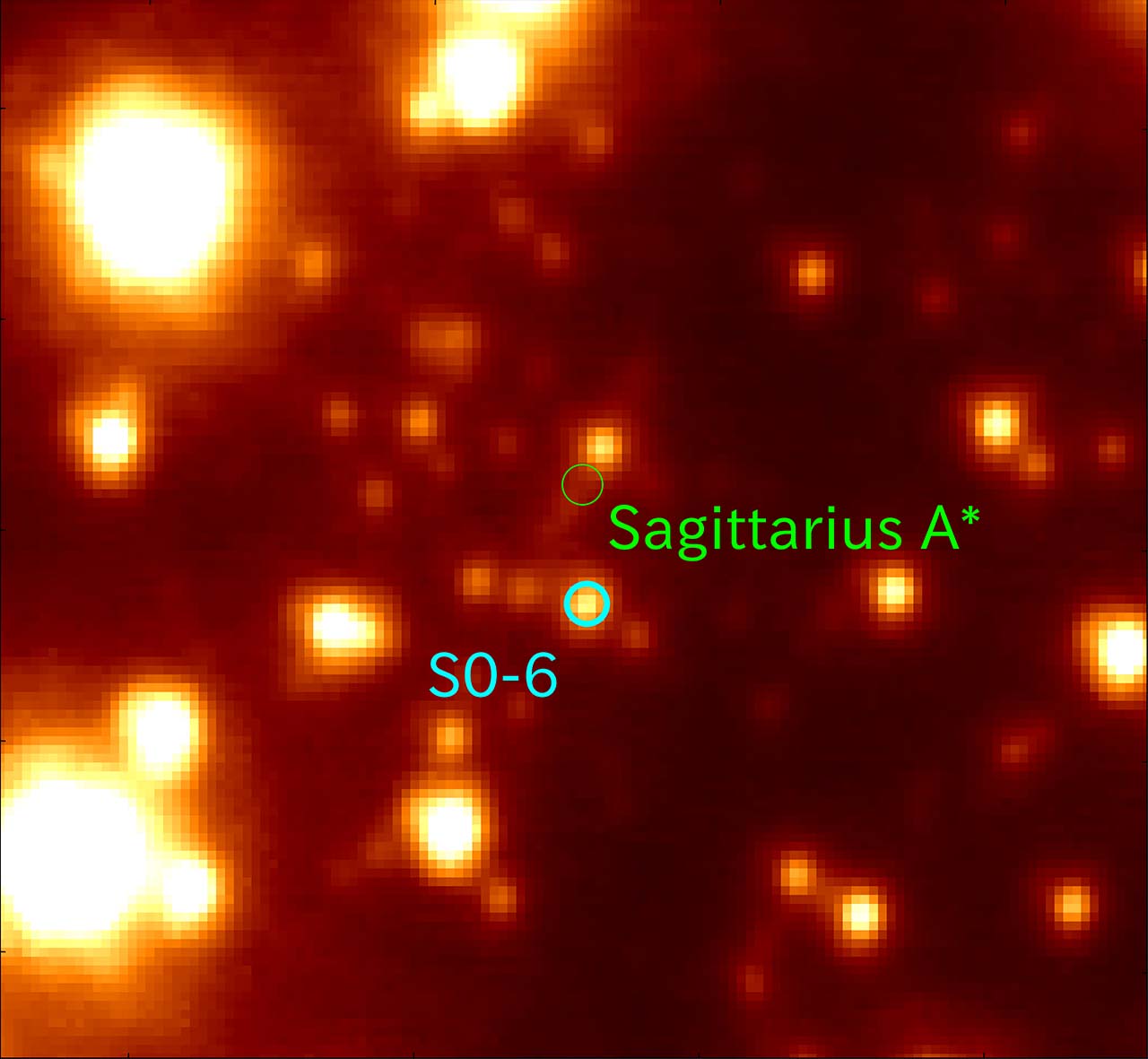
A star near the supermassive black hole at the center of the Milky Way Galaxy originated outside of the Galaxy according to a new study. This is the first time a star of extragalactic origin has been found in the vicinity of the super massive black hole.
Many stars are observed near the supermassive black hole known as Sagittarius A* at the center of our Galaxy. But the black hole's intense gravity makes the surrounding environment too harsh for stars to form near the black hole. All the observed stars must have formed somewhere else and migrated towards the black hole. This raises the question, where did the stars form.
Research by an international team led by Shogo Nishiyama at Miyagi University of Education indicates the some of the stars may have come from farther away than previously thought, from completely outside of the Milky Way. The team used the Subaru Telescope over the course of eight years to observe the star S0-6 located only 0.04 light-years away from Sagittarius A*. They determined that S0-6 is about 10 billion years old and has a chemical composition similar to stars found in small galaxies outside the Milky Way, such as the Small Magellanic Cloud and the Sagittarius dwarf galaxy.
The most likely theory to explain the composition of S0-6 is that it was born in a now extinct small galaxy orbiting the Milky Way that was absorbed. This is the first observational evidence suggesting that some of the stars in the vicinity of Sagittaius A* formed outside of the Galaxy. Over its 10 billion year life, S0-6 must have travelled more than 50,000 light-years from outside of the Milky Way to reach the vicinity of Sagittarius A*. Almost certainly S0-6 traveled much more than 50,000 light-years, slowly spiraling down to the center rather than making a straight shot.
There are still many questions according to Nishiyama, "Did S0-6 really originate outside the Milky Way galaxy? Does it have any companions, or did it travel alone? With further investigation, we hope to unravel the mysteries of stars near the supermassive black hole."
Detailed Article(s)
10 Billion Year, 50,000 Light-year Journey to Black Hole
Subaru Telescope
Release Information
Researcher(s) Involved in this Release
- Shogo Nishiyama (Associate Professor @ Miyagi University of Education)
Coordinated Release Organization(s)
- National Astronomical Observatory of Japan
- Miyagi University of Education
Paper(s)
- Shogo Nishiyama et al. "Origin of an Orbiting Star around the Galactic Supermassive Black Hole", in Proceedings of the Japan Academy, Series B, Physical and Biological Sciences, DOI: 10.2183/pjab.100.007






